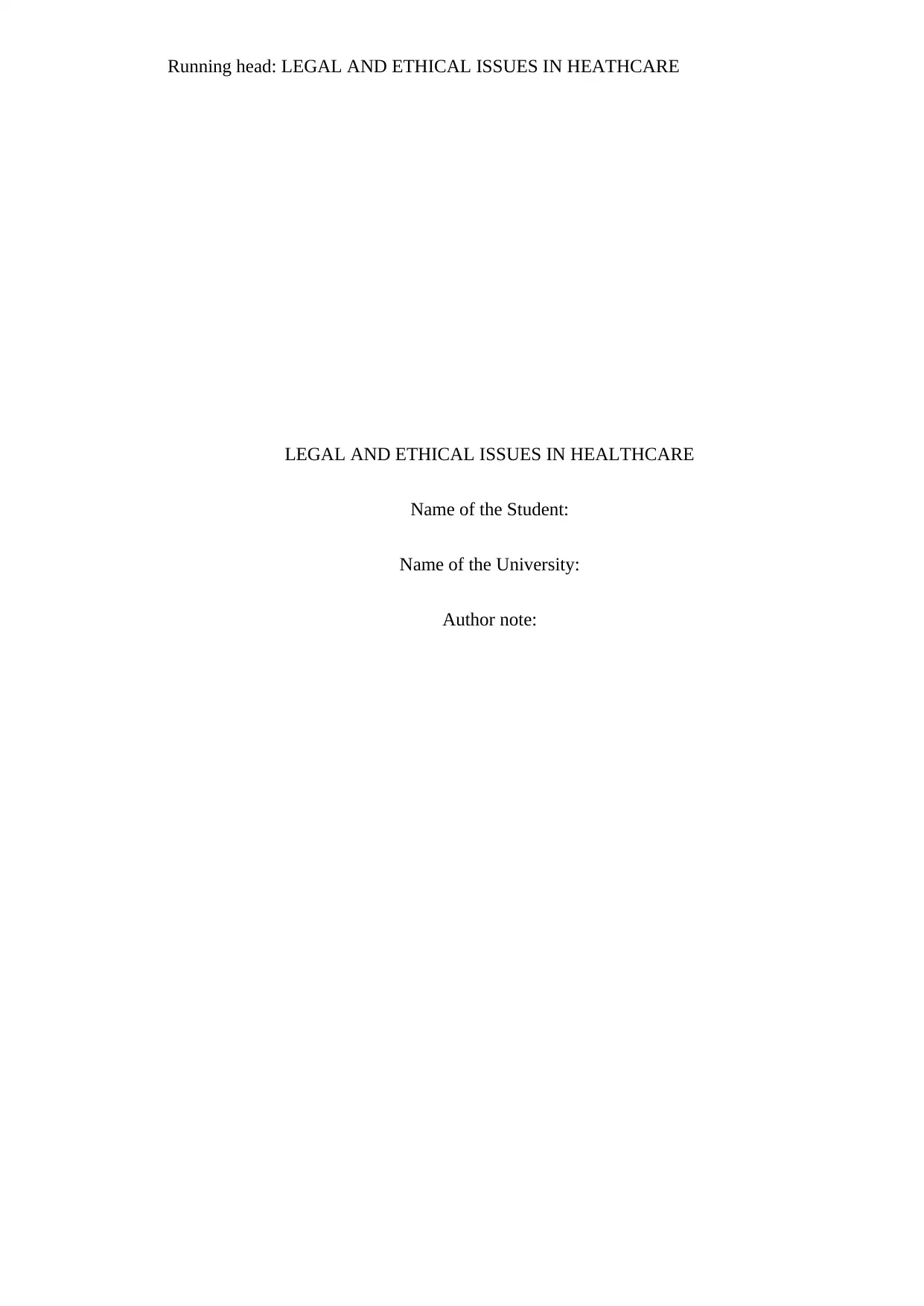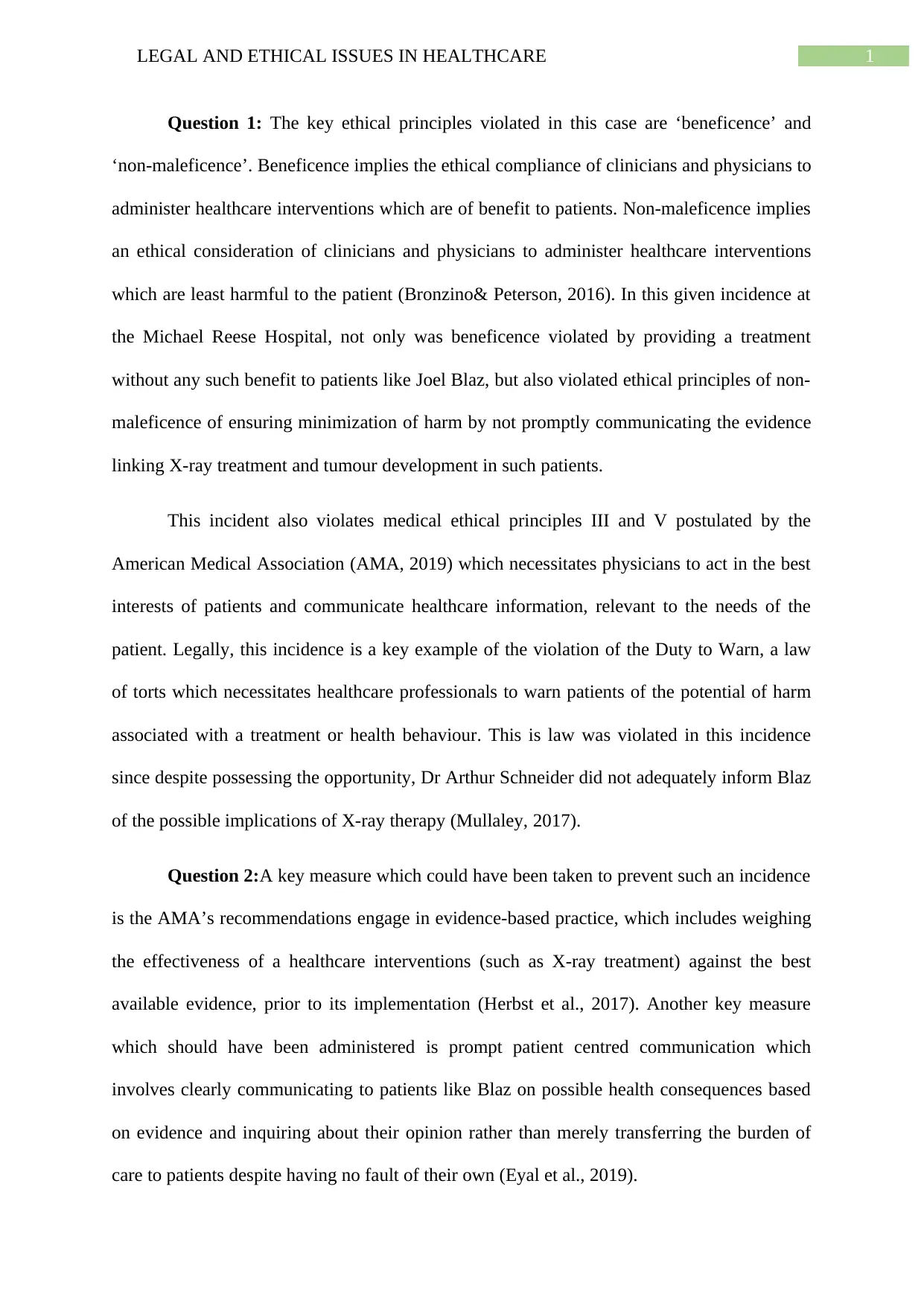Healthcare Ethics: Beneficence, Non-Maleficence, and Duty to Warn
VerifiedAdded on 2022/12/27
|3
|622
|55
Homework Assignment
AI Summary
This assignment addresses legal and ethical issues in healthcare, specifically focusing on a case study involving violations of beneficence and non-maleficence at Michael Reese Hospital. The student identifies that the hospital violated ethical principles by providing potentially harmful treatment (X-ray therapy) without patient benefit and by failing to promptly communicate the risks associated with the treatment. The assignment highlights the violation of the Duty to Warn, a legal concept requiring healthcare professionals to inform patients of potential treatment risks. The student then suggests recommendations to prevent such incidents, including the implementation of evidence-based practice, careful evaluation of treatment efficacy, and improved patient-centered communication to ensure informed consent and patient autonomy. References to the AMA Code of Medical Ethics and relevant literature are included to support the analysis and recommendations.
1 out of 3






![[object Object]](/_next/static/media/star-bottom.7253800d.svg)